 Image by b_d_solis
Image by b_d_solisIt is easy to see the point of hitting ‘publish’ on your blog post as the ‘end’ of the process of posting – however more often than not the real action and fruit of a blog post happens once it’s ‘live’ and being interacted with by readers and other bloggers. To hit publish and move on to the next post at this point is an opportunity gone begging.
2 Benefits of Fostering Conversation on Your Blog
For me the main two benefits of a blog with great conversation are simply:
- it adds depth to posts – my belief is that together we know a lot more than any one of us. As wise as you might be as a blogger – when your readership adds their knowledge to your posts in the comments section – it’ll generally become a better resource to future readers.
- it builds community and reader loyalty – increasingly people are going online not only to find ‘information’ but to find community and places to ‘belong’. A blog which regularly has good conversation where people’s ideas are heard and valued is a place that people will want to return.
13 Tips for Growing the Conversation On Your Blog
Let me start by saying that this post is not about ‘how to get comments on your blog’. I’ve written previously about 10 techniques to get more comments and would recommend that post as a primer for this one.
What I do want to focus on in this post goes beyond getting comments and how to grow ‘conversations’ (something that I think is a little deeper). There is some overlap – but I hope this post goes beyond that previous one.
1. Set Time Aside for Conversation
The biggest conversation killer in my own life is simply that I’m too busy. This is true in ‘real life’ as well as blogging. If you don’t set aside time to have conversation it is highly unlikely to ever happen because it takes time.
Again – I’m not talking here about leaving comments (leaving a comment can take a second or two) – but actually engaging in conversation means listening to what others are saying and thoughtfully responding in a way that goes deeper, adds value and says something meaningful – this takes time and if you don’t prioritize it you’re not likely to fit it in.
2. Ask Questions
As mentioned in my post on how to get comments, ‘asking questions’ is a powerful technique for starting off a conversation. If you want people to respond to your posts include questions within them – it’s key to get the comment thread started, however it’s also a great technique for keeping the conversation going.
One way to add depth to a conversation and to draw out more from those commenting is to take their comments and ask questions of them that elicit a second response. Rather than just responding to someone’s comment with a ‘great point’ type comment – why not go a little deeper with a question that draws them into extending their idea.
3. Answer Questions
Not only is asking questions powerful – but so is answering those that readers ask. This can be challenging when you get a lot of comments on your blog (I’ve had to hire someone to help me manage this lately) but it makes your posts more meaningful and helpful to readers who come away wondering about some aspect of what you’ve written.
4. Track Offshoots of Conversation
The beauty of blogging is that posts that one blogger publishes can inspire other bloggers to write posts on a similar topic on their own blog. While the comments section of your blog might be the place that most of your readers interact with your ideas – a good post might inspire multiple conversations in all kinds of places in the blogosphere.
It is important to be aware of these offshoot conversations and to participate in them. Start a vanity folder in your news aggregator to help track them and when you find them visit the blog and add value to the conversation there. Don’t feel you need to drag people back to your blog – but add value on that blog. In doing so you will build a relationship with the blogger who has posted about your idea but also potentially could find yourself a few new connections (and even new readers) among their readership.
5. Add Value and Depth
I’ve talked many times about writing blog posts that are useful and unique (the secret to great content) – however it struck me recently that the same advice actually applies to comments. If the comments that YOU leave (either on your own blog or others) are not actually useful (if they don’t add value and/or depth to the conversation) and if they are not simply echoes of what others are saying (ie unique) then there is little point in leaving them.
One of the best ways to kill a conversation is to respond to something that someone else has written with a generic comment like ‘great point’. Before you comment, consider what you’re writing. Does it add something to the conversation? Will it elicit a response from others? Is it unique from what others are saying? If the answer to these questions is ‘no’ – work on your comment until it does.
6. Listen, Listen, Listen
As a blogger who has just published a post you’ve been doing most of the talking and your readers have been doing the listening – so when it comes to the comments section of your blog turn the tables and become the listener and let others do the talking.
Conversation is a two way street and if you take the ‘monologue’ approach into comments then you’re unlikely to develop a culture of conversation on your blog.
7. Play Devils Advocate (with Care)
One way to stimulate conversation is to throw into the conversation an unexpected and opposing point of view. Playing Devils Advocate (when done well) can be a powerful tool to draw out responses in your readers and extend a conversation into a place that it might not have naturally gone.
The key with this approach is to do so with care. Writing something controversial just for the sake of it and in a hostile tone can actually kill a conversation (or take it into the realm of a flame war). A better approach might be to make it clear what you’re doing with an ‘I agree with you – however some might argue….’ type comment.
8. Promote the Conversation
I find that when a good conversation emerges on a post it can actually be very effective to promote the ‘conversation’ (as opposed to the post itself) in some way. For example I occasionally will use Twitter to alert readers to a comment thread with a tweet that says ‘there’s a great conversation emerging at www.xxxx….’ – these tweets tend to get a fairly good level of people not only visiting the post but coming over with an openness to respond.
9. Protect Your Comments Section (Moderation)
The comments section on your blog is a really important space on your blog and can both add to and take away from the perception of others towards your blog. If your comments section becomes a comment spammers heaven or always dissolves into a place where trolls flame one another it will not draw genuine readers into conversation.
As a result I advocate that you not be afraid to protect your comments section and set some guidelines in place for people to interact there. Ultimately it is your blog and your rules need to apply. If people step outside of your rules then they need to be willing to have their comments moderated.
10. Model the Behavior you Want
What about trolls and comments sections that get too negative? My theory is that the majority of blogs that have highly snarky comments sections will generally have bloggers posting to them that display their own fair share of snakiness in the blog posts that they write. I’m sure there are a few exceptions but I find that most blog readers take the lead of the blogger on a blog when interacting in comments.
As I’ve previously written on this topic:
“If your blog is written in a positive, optimistic, helpful and inclusive voice then I find that those commenting generally respond with a similar tone. Write in a snarky, negative, rant dominated tone that makes fun of others and you can expect a very similar vibe in your comments.”
11. Bounce off Comments with New Posts
One of the weaknesses of blogs over forums is that conversations can have a limited life simply because the post that they happen on falls off the front page of the blog as new posts are published.
One way to keep a hot conversation going is simply to write a follow up post that extends upon ideas in the first. One approach is simply to elevate some of the comments on the previous post into a new post to stimulate an extension of the conversation. This not only keeps the conversation going but also rewards those who’ve previously participated with a moment in the spot light. This is what I did recently on DPS with this post on video on DSLR cameras.
12. Use Email
Another of the challenges of blogs is that often readers will leave a comment and never return to the post to continue the conversation. You can ask them all the questions in the world but if they don’t come back to the blog they’ll never see them.
There are a variety of commenting tools to help overcome this (I use a ‘subscribe to comments’ plugin which helps a little) but one effective way to keep conversations going is simply to follow up those who’ve commented with an email. For example – if someone asks you a question and you respond – shoot them an email after you answer their questions to let them know. The same technique works if you have asked them a question in comments.
13. Empower Your Community to Lead Conversation
One of the challenges that faces bloggers as their blogs grow and become popular is to genuinely and actively participate in every conversation happening on their blog. I personally struggle with this quite a lot across my two blogs which on any given day can have a total of 150-500+ comments.
One thing that can help is to try to develop a culture on your blog where the conversations are not dependent upon you alone. This takes time to achieve but unless you’re a conversation freak and/or can keep a million balls in the air at the same time (like Gary V, Liz, Scoble – each of whom leaves me shaking my head at the amount of conversations they participate in) you’ll need to do something to help you cope with your comment section as your blog grows.
One way to grow this community driven culture of conversation on your blog is simply to model it yourself and when questions are asked in the comments section on your blog to invite others to answer rather than feel you need to be the only one answering. As I say – this takes time but as you see your readers answering one another’s questions thank them for their comments and even elevate some of their answers to actual posts.
Lets Talk
OK – so this is where I invite you to comment, to add what you’ve learned about having conversations on your blog.
I’d love to hear what you do to foster conversation on your blog?
Do you use any particular techniques? Are there any tools that you use to help manage it? What’s the hardest part about generating great conversation on your blog? What’s worked for you?
PS: Tomorrow I’ll be posting some more tips on this topic from a few bloggers that have runs on the board when it comes to building blogs with great conversation. I’ll include a few of the tips left in comments below also so have your say and some of your ideas might be included in the next post!
Don't miss: Conversations for Action
I blog to learn from my writing and to share. Today, you can skip straight to the sharing bit clicking straight to the “lets play catch” website and signing up to Hal Macomber's mini email course, which I recommend at the end of this blog. Or, you can continue reading and get there just a few minutes later.
A few years ago I came across Hal Macomber’s Reforming Project Management weblog. This was in the days before XML feeds, RSS and bloglines but I was checking his blog every day to pickup his latest gem. Hal seemed, to me, to have GOT what I was trying to GET: he was practice lean thinking, he was well versed in Goldratt’s stuff, he was doing it and he was writing about it. Over the years we have become good email buddies. Even though he doesn’t blog so much these days my respect continues to grow.
Enough gushing. In a few moments, I want to point you to Hal’s latest freebie offering – a mini-email-course – but before doing that I want to tell you my story.
One day I was looking through Hal’s “About Hal” section on his website and I was intrigued when he said that his “preoccupation with operations effectiveness finally paid off when [I] learned about workflow, Fernando Flores' linguistic-action reinterpretation of work.” What?, I thought, A guru I don’t know about? I hunted around the web for more info on Flores but I didn’t find bugger all (apart from this fastcompany article that points out he was once Chile’s Finance minister and a political prisoner and these two WSJ articles). I found a couple of books on amazon.com (here and here), both of which are – to be honest – fairly hard going.
Intrigued, I was, ignorant I remained.
At about the same time I discovered the Agile Software Development movement and bumped into my now good friend Hubert Smits through the AgileScotland group which he had started (and I now run). It turned out that Hubert was working for Vision a Irish-owned consulting company that not only practiced the Flores' stuff but now owned BDA, the company started by Flores. Hubert told me more about Flores' work, I met his boss, we chatted, months passed, one thing led to another, and now – since February – I’m working for them on contract. My boss and good mate Jorge has been sharing the Flores' stuff and I’ve picked up bits and pieces as I go. I see why Hal was impressed:. Flores' theories and practices make things work. He has filled a gap in my own knowledge that I truly didn’t even know was missing.
I’m still an amateur, but Flores’ stuff revolves around conversations, commitments and trust. To put in my simplistic words, it is much easier to manage if people make good commitments that keep. If they keep their commitments then trust develops. High trust organizations need less ceremony, paperwork and bureaucracy to keep things flowing. Conversely, in organizations where people don’t keep their commitments, there is generally low trust, the costs of enforcing commitments are high and they are very hard to manage. Contrast a software development team that keeps its commitments by delivering projects on time and budget with one that doesn’t. Where would you rather work? Which would you rather have as your supplier? Which has the most paper work? Which team’s customer tries to drive productivity by enforcing arbitrary deadlines?
This trust, commitment, conversation stuff kinda obvious I suppose, but it’s not so easy in practice because most of us aren’t taught how to do it. Some of us do this intuitively (not me, to be fair), but what Flores did was figure out a framework for having conversations that result in kept commitments and build trust.
I’ve nicked the following diagram from vision's website that shows what is known by Flores devotees as “the loop”. It shows the typical flow of a conversation.

What this simplified version of the diagram doesn’t show is the many ways and places where the conversation can go wrong. But it’s not hard to fill in the gaps: think of a recent conversation you had where either you made a commitment or one was given to you, match it to the diagram, then think of all the ways it went wrong or might still go wrong. One of the killer problems, for example, in software development is “requirements ambiguity” which in terms of “the loop” happens when the “Conditions of Satisfaction” aren’t clear. Writing the tests for each requirement before building the code and prototyping both clarify the “conditions of satisfaction”, bypassing much ambiguity and preventing lots of expensive rework. [And this is, of course, horrendously easier to do in an iterative/incremental/agile environment than a waterfall environment – have you ever tried to write all of the tests for a 150 page requirements document, up front, when the requirements keep changing all the time?].
Now, finally, back to Hal Macomber. Hal has recently come up with a FREE mini-email-course “lets play catch”, which teaches the fundamentals of “the loop”. Each day he sends a series of brief, daily emails with explanation and simple actions for you to do. He also gives you access to an hour long MP3 webcast which is worth its weight in gold. Maybe one day he’ll write a book about it.
Beyond The Conversation

OK, let's get this straight. For the past couple of years we've had a great time talking about the merits of conversation, transparency, authenticity, facilitation, participation, and blah blah blah. Having talked about "The Conversation Economy" myself—I'm no exception to the "BLAH". So, we get it—and now it's time to get down to business. From my vantage point there are a few things going on at once, so here's a few thoughts rolling around in my noggin.
1. Social NetworksI won't go too deep here, we know what the deal is. Many of us are spending countless hours managing our profiles, uploading our videos and photos, creating personal brands and generally yakking our heads off. Oh, and we're also using social technologies to collaborate remotely/more effectively and yadda, yadda, yadda. It's not going away, it's not a fad, and yes it changes how people want to interact with both individuals and in some (but not all) cases, organizations.
2. Internal Properties
Some organizations have invested in creating internal communities to either help break down silos or bring in external viewpoints that they can enjoy from the safety of their secure environments. Much of the interactions here mimic many of the things we see on social networks. People have profiles—wikis can be used for collaborative editing, discussions can ignite around relevant topics and of course information can be shared. The internal part is important because it keeps the interactions within the business, which aligns with most corporate cultures. But the benefits are similar to participation in social networks—the operative word here is participation (Sorry, I couldn't resist).
3. External Properties
The third leg here in the stool may actually be the most critical and difficult to manage. Most organizations are moving toward an external presence that consists of multiple sites, microsites, banners, blogs—you name it. Anything that gets "launched" ends up in the digital ether and is either maintained or neglected. Many of these properties interconnect and depend on one another. Some come and go and some just litter the Web.
I'd say there are probably more ways to slice this—but for me these are the three biggies and I'm starting to think about a few questions, such as:
1. How will these initiatives relate to one another?
2. Will they be able to scale at the same rate or will some pull ahead of others?
3. How much redundancy will occur between them?
4. Will new tools need to be developed to coordinate internal/external and social activities?
5. What platforms will best be served for research vs. communication?
6. Which systems will demonstrate the most flexibility to adapt?
Right now, I'm mostly in question mode. Just seems to me that as all of these wonderful changes take place, there is going to be some type of maturation process which requires a bit of orchestration that moves beyond evangelizing the need for "conversation".
Would love to get your thoughts on this one.
Business Process Modeling

Visualize business workflow by BPMN business process diagram and process map. Generate BPEL.
Business process diagram

Design workflow with Business Process Modeling Notation (BPMN) 2.0 standard.
The first movie demonstrates the modeling of typical sales order processing process using BPMN. The movie shows how to create pools, lanes, events, tasks, sub-process, gateway and data object. It also demonstrates how to present the change of states within the process.
The second movie shows some handy functions that can help in business process modeling such as real-time model validation, moving large amount of shapes with sweeper, insert task in existing process...
The first movie demonstrates the modeling of typical sales order processing process using BPMN. The movie shows how to create pools, lanes, events, tasks, sub-process, gateway and data object. It also demonstrates how to present the change of states within the process.
The second movie shows some handy functions that can help in business process modeling such as real-time model validation, moving large amount of shapes with sweeper, insert task in existing process...
Define business process working procedure

Write step-by-step working procedures to business process diagram flow objects.
- Effective business process capturing (Free)
Online training
Identify business process elements using textual analysis

There are various ways to discover pools, lanes and tasks of process.Visual Paradigm for UML supports textual analysis for extracting pools, lanes and tasks from text document. The following movie shows how ABC Company use textual analysis to discover pools, lanes and tasks from article describing the resell business process, and develop initial business process diagram.
- Capturing Business Process Modeling Workshop (Paid)
Online training
Process map diagram
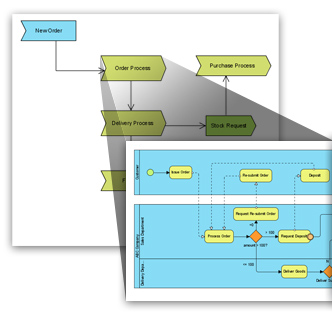
Business process diagram presents detail execution and communication view of process. Model middle to large organization workflow in single business process diagram is virtually impossible. Process map diagram provides a high level view of business process. The process in process map can drill down using business process diagram and the process link shows relationships between different business processes. Process map diagram is a good starting point for top down modeling approach. A typical process map diagram shows in following screenshot.
- Drawing process map diagram
User's Guide
Event-driven process chain diagram
Event-driven process chain diagram (EPC diagrams) is kind of business process modeling diagram. EPC diagram contains events, functions, operators, organization units, flows and information resources. A typical event-driven process chain diagram is shown in the following screenshot.
- Drawing event-driven process chain diagrams
User's Guide
Data flow diagram
Data flow diagram (DFD) presents flow of data. DFD is a classical software engineering diagram for structural design. There are various levels of DFD. Level 0 DFD is context diagram showing how system interacts with external entities. Level 1 DFD shows some detail of system. DFD is not a popular notation after software industry was shifted from structure approach to object-oriented approach. There are more and more business analysts use DFD to model the data and document flow of the modeling organization. A typical data flow diagram is shown in the following screenshot.
- Drawing data flow diagrams
User's Guide
Organization chart
Organization chart shows the structure of an organization. Organization chart is usually drawn and read from top to bottom. The top (root) node is the CEO and then first level managements, second level managements and so forth. The lines in organization chart shows the relationships between staff.
- Drawing organization charts
User's Guide
BPEL generation
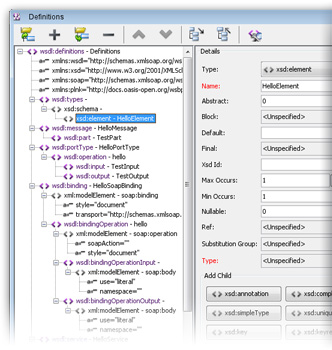
Visual Paradigm for UML supports create, edit, visualize and generate Business Process Execution Language (BPEL) and Web Services Description Language (WSDL). The generated BPEL and WSDL can deploy to standard BPEL engine such as Apache ODE.
- Generate BPEL
Tutorial
- Generate BPEL from BPMN (Free)
Online training
JPDL generation
Design business process with BPMN business process diagram and generate jBPM Process Definition Language (JPDL).
- JPDL generation
User's Guide
Fact diagram
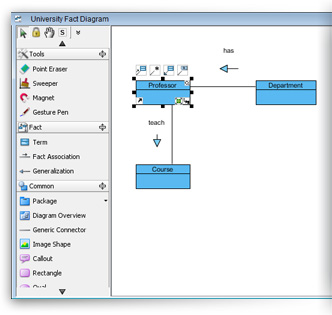
Relate glossary terms and design business structure by fact diagrams. Fact diagram supports attributes, unary fact type, binary fact type and n-ary fact type.
Who are your business spokespeople?
December 23, 2008

Is it top level management? The public relations team? Nominated business spokespeople? Or everyone?
Who should it be?
It is standard practice for a corporate website to provide an archive of interviews, speeches and other presentations made by senior staff – some as documents available for download, some as webcasts.
Some of the better corporate websites link to these speeches from the board biographies, so that it is easy to find out, for example, what the Strategy Director thinks about future trends in their business (see Microsoft).
Often, the main contact for journalists on the corporate website will be the public relations team, who have phone numbers, email addresses clearly and easily available (see British Energy for a good example). Sometimes, there will also be contact details for nominated business spokespeople, with some explanation of their area of expertise (see Scottish Widows for an example). This is good – we like to see experts within the company available to speak.
On the other hand, the business conduct guidelines for most major companies play heavily on the idea that all employees are representing the company, and require individual employees to behave in an appropriate fashion. And this is quite right: employees, particularly those dealing day to day with customers, do represent the company, and their actions significantly affect the brand and image of the company.
Yet often, these employees have been taught to refer all requests for comment upwards, or across to the PR department. So are they only representatives in the way they look and behave?
For some companies the nature of the spokesperson for the company has been changing, and has become more devolved. As people within the company embrace social media, and blog, tweet or otherwise engage with people outside the company, these people are increasingly representing the company by what they say (or write), not just by their behaviour or dress. They are becoming ‘accidental spokespeople‘, and as a result, there is potentially a loss of control by the company.
So, how should you deal with that?
One option, of course, would be to ban employees from social networking at work … either completely or partially, leaving the official social media team to do all such activity. Cutter Consortium point to some interesting tactics of permissible hours for such activity. This keeps you safely within the old pattern of ‘refer upwards or call PR’, but may mean that you miss out on some of the benefits of social media.
Another option is the Zappos approach, which seems to work well for them:
TrackBack
TrackBack URL for this entry:
http://www.typepad.com/services/trackback/6a00d8345159b069e200e5529182728833
Listed below are links to weblogs that reference What's your (blog) Conversation Strategy?:
The point of this series is simply that when you take a little extra time at each of these points in the process you add depth and increase the effectiveness of your blog post.
Today I want to share one last point to ‘pause’ – it is as important as each other point in the process (if not more so) and can take a ‘good post’ into ‘great post’ territory.
http://www.typepad.com/services/trackback/6a00d8345159b069e200e5529182728833
Listed below are links to weblogs that reference What's your (blog) Conversation Strategy?:
13 Tips on How to Have Great Conversations On Your Blog
Lately I’ve been suggesting 11 points to take a little extra time in the posting process on a blog. We’ve looked at everything from choosing topics, to crafting titles, to calls to action, to promoting your posts.The point of this series is simply that when you take a little extra time at each of these points in the process you add depth and increase the effectiveness of your blog post.
Today I want to share one last point to ‘pause’ – it is as important as each other point in the process (if not more so) and can take a ‘good post’ into ‘great post’ territory.




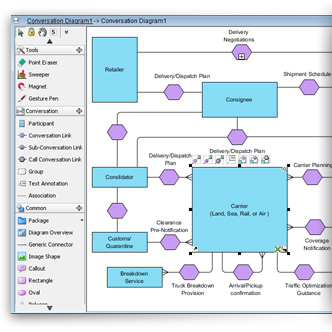







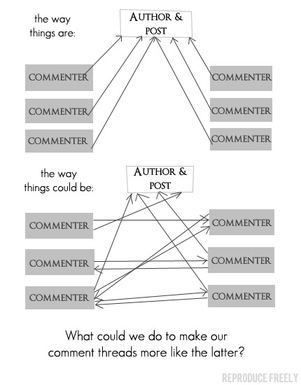
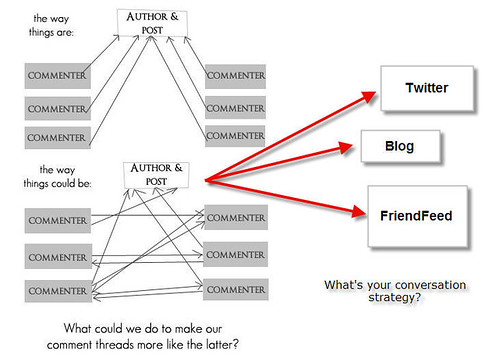
Hello Dear, are you genuinely visiting this web site on a regular basis, if so then you will definitely obtain pleasant know-how.
پاسخحذفmy web site :: easco hand tools